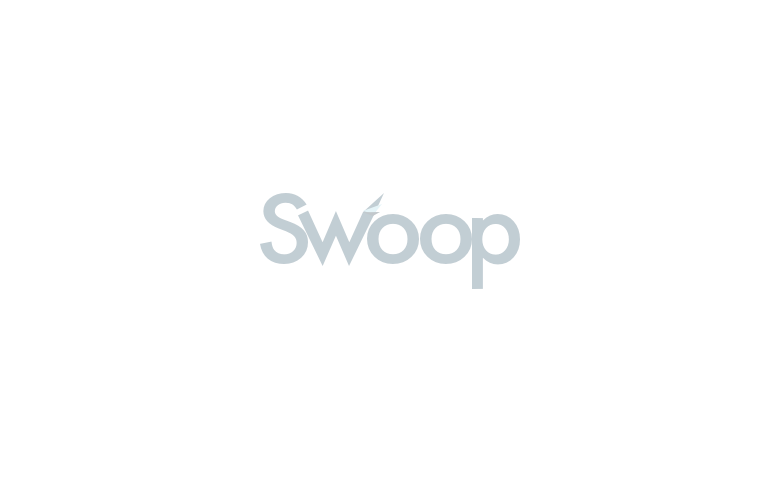TABLE OF CONTENTS







Page written by Chris Godfrey. Last reviewed on April 10, 2025. Next review due April 6, 2026.

Asset finance is a well established, and ever growing funding choice for UK businesses. With asset finance, a company can acquire new and used assets without impacting cashflow making it easier to buy, use and benefit from big-ticket items such as company cars, vans, plant machinery, to smaller and less tangible items like technology hardware as well as software. Instead of paying one large sum upfront, spread the cost over time with smaller, regular payments. Pay for these assets as you use them and relieve pressure on your cashflow. With income generating assets you may be cashflow positive from day one. Alternatively, a business could also use some assets as security to borrow money or take out a loan against what they already own, essentially using existing assets as collateral for loans to help your business grow.
Asset finance is a finance option that allows business to grow by acquiring much needed equipment such as business vans, plant machinery, aircrafts, IT hardware and software, and more. The business will pay an agreed amount over a set period of time, allowing them quicker access to the asset, without having the cost of buying outright.
When you need such assets, but don’t want to make a large cash payment to buy them outright, asset finance can support your purchase. It does this by spreading the cost over time. You make smaller, regular payments during a fixed term. Fees and interest are charged in addition to the cost of the asset. You have full use of the asset throughout the term.
Equipment leasing and hire purchase are common examples of asset finance.
With asset finance typically responsibility for maintenance of the asset, (repairs, insurance, etc.), will rest with you not the finance company. At the end of the term, the asset may return to the finance provider or ownership may transfer to you, again depending on the type of asset finance used.
Alternatively, asset finance may release the cash value of an asset you already own. With this type of agreement, you transfer ownership of the asset to a lender, who places the asset on an asset finance agreement. Essentially purchasing the asset from you for the agreed price. This type of loan is known as asset refinance.
Merchant cash advances can be easier to obtain than traditional funding options and they’re a good alternative for businesses with few assets, or limited credit history. Businesses that have been rejected for other types of funding may still qualify for a merchant cash advance.
Suitable for businesses with a high volume of card payments, merchant cash advances are used by many types of industry. Sole traders, partnerships and limited companies are welcome to apply.
Use our handy asset finance calculator to get an understanding of how much your loan might cost.
Your results
Finance amount
£-
Estimated interest
-%
Total repayable
£-
Monthly payments
£-
An asset is an item of property – tangible or intangible – that has intrinsic value. Buildings, vehicles, equipment, and even software, are typical examples. Businesses generally use assets to assist their day-to-day operations. You may also use them to pay off debts, secure a loan, or meet a commitment.
Soft assets generally refers to anything that has less of a residual value or intangible assets that are essential to the successful management and organisation of the business, but are more difficult to quantify and value or may not have a physical form. Soft assets can be of enormous importance to businesses, and sometimes, their value can exceed the worth of all the hard assets a business may own.

A word from Andrea
"With asset finance, you can leverage the value of assets such as vehicles, buildings and equipment instead of paying one large sum upfront. This allows you to spread the cost over time with smaller, regular payments. Alternatively, asset finance may release the cash value of an asset you already own. Here, you transfer the asset as collateral to a lender, who then provides a loan based on the asset’s value."
There are five main types of asset finance:
Hire purchase (HP) of vehicles, plant, or equipment for your business is a similar process to buying a new kitchen or furniture for your home.
HP allows your company to buy a new asset in instalments instead of paying a large, upfront sum. It’s a simpler form of asset finance than equipment leasing, and you end up owning the vehicle or equipment once you finish making the payments. In most cases, the asset appears as a positive item on your balance sheet from the start of the agreement, but the provider owns the asset until the last instalment is paid. This means you cannot sell the asset during the term. A small fee, called the Purchase Option Fee is often required to transfer ownership of the asset to you. This may be as low as £1. With hire purchase, you are responsible for the asset’s upkeep.
A finance lease is an agreement where a leasing firm buys a business asset on behalf of your company and then rents it out to you. You make monthly payments for what’s known as the ‘primary rental period’ until you cover the cost of the equipment, plus interest. You can then choose to return the equipment, or sell the asset to a third party on behalf of the leasing firm. In some cases, you may share in the proceeds from the sale of the asset. Some agreements me extend into a secondary rental period. Note that although you may never own the asset, you are responsible for insurance and maintenance costs during the rental period.
Equipment leasing is similar to a finance leasing except usually on soft assets. In these agreements you rent the equipment from a vendor or a leasing lender and make regular scheduled payments over a fixed or minimum term. You may be allowed the option to upgrade the equipment during the lease. At the end of the rental period, you can return the asset to the lessor, upgrade the item, or potentially buy it outright by making a fee payment. Everything from laptops and printers to commercial vehicles and machinery can be covered under leasing.
Equipment leasing can offer potential tax advantages as such will suit any business early-stage companies that don’t have enough working capital to invest in their own assets to established organisations seeking to upgrade their equipment.
Although similar to finance leasing, an operating lease is usually used for specialist plant or equipment that a company only wants for a limited period or that it never wants to own. You rent the asset over the short or medium term, making regular payments for the time it is in your possession. One of the biggest advantages of this type of lease is that you can upgrade the equipment regularly, sometimes even during the rental period.
An operating lease may work out cheaper than a finance lease because the cost is based on the value of the equipment, but over a much shorter period. The company that rents you the equipment is responsible for its maintenance.
Asset refinancing allows the release of a proportion of the value of an asset you already own. This relies on the asset having a sustainable value, and therefore is only usually available on hard assets (vehicles, plant, industrial machinery etc). With this type of agreement, you transfer ownership of the asset to a lender, who places the asset on an asset finance agreement (Hire Purchase or a Finance Lease). Essentially purchasing the asset from you for the agreed price. The lender will typically pay from 70-90% of the valuation of the asset.
Similar to asset refinance, a sale and hire purchase or lease back may be a great option for your business. In this type of agreement, you sell recently purchased asset(s) to a specialist finance company for the original purchase price. Usually the purchase would need to have been within 3 months, however, some lenders will consider older transactions. With this type of agreement, you transfer ownership of the asset to a lender, who places the asset on an asset finance agreement (Hire Purchase or a Lease). This proves very useful if you need to purchase the asset(s) urgently, from an unusual source, or if you simply decide after purchasing that you would prefer to benefit from a finance agreement and maintain a healthy cashflow.
Designed for businesses seeking to reduce the time-consuming tasks of sourcing and maintaining their own fleets, contract hire is strictly for vehicles. With this type of asset financing, a provider finds and maintains the vehicles for the business, who then pay regular instalments over an agreed lease term. Fleet management services may be included in the contract hire costs. At the end of the leasing period, the provider assumes responsibility for the disposal of the vehicles.
The asset finance industry is a core driver of the UK economy. According to the Finance and Leasing Association, (FLA), the leasing and hire purchase of everything from construction machinery and agricultural vehicles to IT systems and aircraft reached record levels in 2019, growing 6% year on year.
The reasons for this expansion are obvious. Asset financing makes the purchase of all business assets easier and it lets you benefit from the asset as you pay for it. Your capital is not locked up in a purchase that may be depreciating in value, and asset-security means you pay less interest and fees.
Swoop works with a wide variety of asset finance companies in the UK. Many of them specialise in specific areas of industry or type of agreement. Register with us to find the best provider for your business needs.

Pros

Cons
Yes. However, because soft assets have less residual value than hard assets, traditional lenders may charge a slightly higher rate. This is where soft asset finance comes into play – specialised financing that offers tailored funding solutions to address the unique characteristics of intangible assets.
Soft asset financing can provide many advantages for businesses that rely on intangible assets to operate. Benefits include:
As with any secured loan, the assets provided in an asset-financing agreement are either owned or transferred to the lender until the contract ends. If you default on the loan, or if you breach other aspects of the agreement, (such as failure to insure), the lender may repossess the asset to recoup their funds. This could harm your business if the asset is a vital piece of equipment.
An engineering firm has a large inventory of high-value machinery. Bought for cash, the equipment is owned free and clear. The company needs to expand to protect its market share. Unable or unwilling to pay for the expansion from normal operating income, the business opts for asset refinance, using the machinery as security. The company pledges the equipment as collateral for a loan, which it then uses to grow the business in new territories. The company still uses the machinery as the loan funds the expansion. The company makes regular repayments until the loan and interest are paid back and ownership of the machinery is transferred back to the business.
Because Islamic (Shariah) law prohibits the payment or receipt of interest, financial speculation, and investment in socially detrimental activities, all financing in Islamic banking is asset-backed financing. In practice, this means any business that operates under the rules of Shariah and that wishes to acquire vehicles or equipment, or obtain a loan secured by an asset they already own, will not pay interest on the agreement. Instead, they will pay a margin (profit) on the value of the asset to the financier who provides the assets or the cash. To facilitate this, the asset must always transfer to, through or be owned by the financier.
An example: a company that adheres to Shariah law needs new equipment. A financier buys the machinery for the business, adds a margin, then lends or rents the asset to the company who pay back the cost of the equipment + margin in regular payments. In practice this method may appear the same as standard interest-bearing financing, but because there is no interest charge on the ‘time-use’ of money to buy the machinery, the agreement performs to Islamic law. These rules apply regardless of the type of asset financing used. In the case where a business that adheres to Shariah law wishes to raise cash using their own assets as collateral, the financier will acquire ownership of the asset, add a margin, then ‘re-sell’ the asset back to the business. Assets are central to Islamic finance.
Short-term asset finance can work in two ways: A short term loan, (less than 12 months), to provide cash to a company that offers its assets as collateral, or as a short-term lease on equipment that a company needs for less than a year.
A short-term loan can provide cash to fill a gap in cashflow or fund an immediate need. A short-term lease can enable a business to fulfil an order without buying equipment they may not need again.
Although most asset finance agreements are for a year or much longer, Swoop works with a network of lenders who can provide short-term asset financing.
Because both methods use assets as their platform, it is sometimes assumed that asset-based financing and the factoring of account receivables are the same. However, there are different benefits, costs, and risks.
In factoring, a business sells their account receivables to a lender, who then advances a percentage of each invoice back to the business, (typically 75% to 90% depending on the financial strength of the company’s customers). Invoice payments go to the lender, who subtract their fee before passing any residual cash back to the company.
With asset-based refinance, the company offers the assets they own as collateral for a loan. The company’s customers are not involved in the transaction. How much the lender will loan to the business is dependent on the value of the assets offered as security.
When a business takes out a loan that will need repayment sooner than the benefits of the loan drive income to the company, it can be said that the business is funding long-term assets with short-term liabilities. This can be dangerous to the company’s health and in financial terms, it is called a ‘maturity mismatch’.
Sound confusing? It isn’t. Here’s an example of what this means: a company takes out a loan to build a new plant. The loan must be paid back in 36 months. However, the new plant will not generate any new income for at least five years. This means the loan will drain current operating income long before the new plant will increase turnover. The maturity of the loan (36 months) does not match the maturity of the new plant (60 months). This is a maturity mismatch.
The implications for this are obvious: Funding long-term projects with borrowing (a liability) that must be repaid before the project can deliver added income, could drive the business into insolvency.
To avoid this risk, factor the maturity of the asset into any borrowing you consider. Match the term of the loan to the time it will take for your new asset to bring added income.
Asset financing rates vary depending according to the deal. However, because the loan is backed by a hard asset (in the case of hard asset finance), the interest rates are usually lower than many other forms of business funding.
Rates can vary significantly depending on a number of factors that impact the risk factor to the lender. Some examples are the time trading, the sector, the value, the type of asset, and even the location of the business. The agreement can also impact the rates, with variations from deposits, the term of the agreement, any balloon requirement, and seasonal payments. Rates can vary and land anywhere from 3% to 50%.
Possibly. It depends on the type of asset-finance you are seeking and the status of your business. If you are intending to use high-value assets that your business already owns as collateral for a loan, the lender’s decision may focus more on the value of the asset. However, even though the loan is secured by collateral, lenders will usually still ask to see your financials. They want to know your business has the capability to make the regular payments.
If you are seeking to acquire vehicles or equipment via hire purchase or leasing, and you operate as a sole trader or partnership, you should expect your personal credit to play a factor in the lender’s decision. If your business is a limited company, the credit rating of the business is more important to the lender. In every case, the lender or provider will need to be assured that you can pay the regular instalments. They do not want to have to repossess the asset. Even with a limited company, your personal credit may be a factor if you are asked to provide a personal guarantee.
Yes. The asset acts as security for the financing. For small businesses and startups, using asset finance to acquire the essential vehicles, equipment, and soft assets you need makes good business sense. Why sink valuable cash in a long-term purchase when those funds can be used elsewhere to grow your company? Hire purchase, asset refinance, soft finance, and leasing options are available to sole traders, partnerships, and limited companies, regardless of their length of time in business.
Swoop works with lenders who offer loans from as little as £2,000 all the way up to £50,000,000. The amount you can borrow will depend on the strength of your business, the type of asset finance you are looking for, what is being purchased or offered as security, and the value of the assets. Start your funding journey to find out how much your business can borrow and what type of asset finance is best for your current and future needs.
Yes. Since 2018, UK asset finance agreements have been subject to The Standards of Lending Practice. These rules assure protection to business customers, regardless of the type of asset finance used. Lenders who subscribe to The Standards of Lending Practice report to the Financial Conduct Authority, (FCA), a government agency with the power to fine or sanction lenders who are found to be in breach of the rules.
If you have a business that can meet its financial obligations, the answer is yes. No matter if you are a sole trader, a partnership, a limited company or even a new startup, there are types of asset-finance and a variety of lenders to fulfil every need.
Calculating the best type of asset finance, the lowest rates, and the ideal lender for your business can be very time-consuming. Ask Swoop to do the hard work for you. Register with Swoop to get the funding you need to make your business grow.
Chris is a freelance copywriter and content creator. He has been active in the marketing, advertising, and publishing industries for more than twenty-five years. Writing for Barclays Bank, Metro Bank, Wells Fargo, ABN Amro, Quidco, Legal and General, Inshur Zego, AIG, Met Life, State Farm, Direct Line, insurers and pension funds, his words have appeared online and in print to inform, entertain and explain the complex world of consumer and business finance and insurance.
Swoop promise
At Swoop we want to make it easy for SMEs to understand the sometimes overwhelming world of business finance and insurance. Our goal is simple – to distill complex topics, unravel jargon, offer transparent and impartial information, and empower businesses to make smart financial decisions with confidence.
Find out more about Swoop’s editorial principles by reading our editorial policy.
Related pages






Get your free Asset finance quote today
Join the 95,000+ businesses just like yours getting the Swoop newsletter.
Free. No spam. Opt out whenever you like.



























We work with world class partners to help us support businesses with finance
Kingfisher Way, Silverlink Business Park, Newcastle upon Tyne, NE28 9NX, UK
View in Google Maps35 Bull Street, Lewis Building, Birmingham B4 6AF, UK
View in Google MapsAberystwyth Innovation and Enterprise Campus
Gogerddan Campus
Aberystwyth University
Ceredigion
SY23 3EE
Dogpatch Labs, The CHQ Building, Custom House Quay, Dublin, Ireland
View in Google MapsSuite 801, Level 8, 84 Pitt Street, Sydney, NSW 2000, Australia
View in Google Maps43 W 23rd St, New York, NY 10010, United States
View in Google Maps21 Dreyer Street, Cape Town, South Africa, 7708
View in Google MapsThanks for requesting a call back
a member of the team will be in touch.




